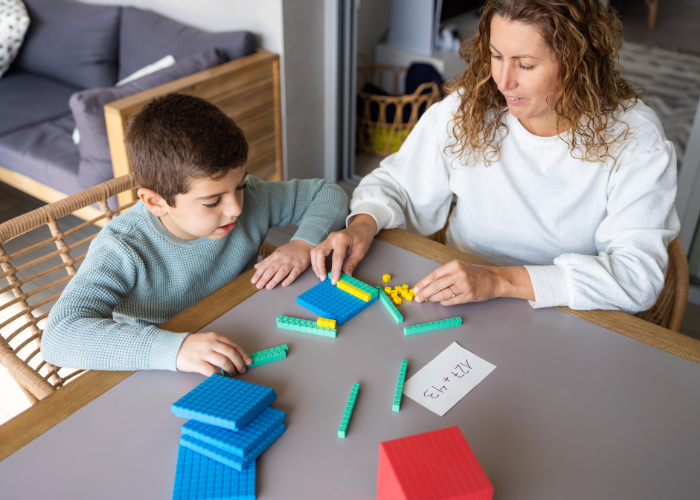Last Updated on October 13, 2023 by user
Knowledge of mathematical symbols is a foundational skill that empowers students to engage with and excel in various academic, professional, and real-world contexts. It enables them to think critically, solve problems, and communicate effectively in the language of mathematics.
Math symbols are essential tools for solving mathematical problems and equations. Symbols help students understand and work with abstract mathematical concepts. For example, symbols like “+” and “-” represent addition and subtraction, which are foundational concepts in arithmetic.
As students progress to more advanced math courses, symbols become even more crucial. Algebra, calculus, geometry, and other advanced fields heavily rely on mathematical notation for expressing complex ideas and relationships.
Science, technology, engineering, and mathematics (STEM) careers often involve complex mathematical concepts. Proficiency with mathematical symbols is essential for success in these fields. Plus, math symbols are used in various real-life scenarios, from personal finance and budgeting to engineering, architecture, and scientific research.

20 Math Symbols Your Child Should Know
Math symbols are fundamental in mathematics and are used to represent various mathematical operations, concepts, and relationships.
While there are thousands and thousands of mathematical symbols, here are the top twenty that your child should recognize and know the meaning of without having to refer to a reference guide:
- + (Plus): Addition. It represents the operation of combining two or more numbers to find their sum.
- – (Minus): Subtraction. It represents the operation of finding the difference between two numbers.
- × (Multiplication): Multiplication. It represents the operation of repeated addition or scaling a number by another.
- ÷ (Division): Division. It represents the operation of sharing a quantity into equal parts or finding how often one number is contained within another.
- = (Equals): Equality. It indicates that the values on both sides of the symbol are the same or equivalent.
- < (Less Than): Comparison. It indicates that the value on the left is smaller than the value on the right.
- > (Greater Than): Comparison. It indicates that the value on the left is larger than the value on the right.
- ? (Less Than or Equal To): Comparison. It indicates that the value on the left is either smaller than or equal to the value on the right.
- ? (Greater Than or Equal To): Comparison. It indicates that the value on the left is either larger than or equal to the value on the right.
- ? (Square Root): Square root. It represents the value that, when multiplied by itself, gives a specified number.
- ^ (Exponent): Exponentiation. It represents raising a number to a certain power.
- % (Percentage): Percentage. It represents a fraction of a quantity out of 100.
- ? (Pi): Pi. It represents the ratio of the circumference of a circle to its diameter, approximately 3.14159.
- ? (Infinity): Infinity. It represents an unbounded or limitless value.
- ? (Summation): Summation. It represents the sum of a sequence of numbers.
- ? (Delta): Delta. Often used to denote a change or difference between two values.
- | | (Absolute Value): Absolute value. It represents the distance of a number from zero on the number line, always a positive value.
- () (Parentheses): Parentheses. Used to group expressions and control the order of operations.
- {} (Braces): Braces. They are used in various contexts, including sets and functions.
- [] (Square Brackets): Square brackets. They are for grouping and indicating intervals.
How to Teach About Mathematical Symbols

Teaching your child about basic math symbols and their meanings can be done engagingly and interactively to help them understand and remember the concepts.
Here’s a step-by-step approach you can follow:
1. Introduction and Exploration
- Introduce the importance of math symbols in solving mathematical problems and equations.
- Show real-world examples of how these symbols are used, such as in recipes, shopping receipts, or construction plans.
- Have a discussion with your child about why these symbols are necessary for clear communication in mathematics.
2. Visual Aids and Manipulatives:
- Use visual aids like posters, flashcards, or interactive online tools that display each symbol along with its meaning and examples.
- Provide physical manipulatives, such as counters or blocks, to help your child visualize addition, subtraction, multiplication, and division.
3. Interactive Activities:
Create hands-on activities that allow your child to practice using the symbols.
For example:
- Use cards with numbers and symbols for your child to create their own equations.
- Play math symbol bingo or scavenger hunts, where your child must find and match symbols to their meanings.
4. Symbol Storytelling:
Develop memorable stories or mnemonic devices for each symbol to help your child remember their meanings.
For example:
- “Plus” (+) could be a superhero that adds numbers together.
- “Minus” (-) could be a character that takes away items.
- “Division” (÷) could be visualized as sharing a pizza among friends.
5. Real-Life Examples:
Show your child how each symbol is used in real-life scenarios.
For example:
- Explain how to calculate a discount using percentages.
- Demonstrate how to measure a recipe using fractions.
6. Interactive Technology:
- Utilize educational apps, online games, or interactive simulations to reinforce the concepts. Many apps offer engaging ways to practice and master math symbols.
7. Practice and Application:
- Provide worksheets or online exercises where your child can practice using the symbols in various contexts.
Create word problems that require the use of different symbols to solve.
8. Review and Assessment:
- Conduct regular reviews to reinforce the symbols and their meanings.
- Assess your child’s understanding through quizzes (such as printable math worksheets) or puzzles.
9. Encourage Creativity:
- Have your child create their own math problems using the symbols and exchange them with their peers for solving.
Remember that making the learning process fun and interactive helps your child better understand math symbols and their meanings.
Tailor your teaching approach to the needs and preferences of your child, and provide ample opportunities for practice and exploration.
Final Thoughts
Students need to learn math symbols for many reasons, each contributing to their overall mathematical proficiency and cognitive development. These symbols are the building blocks of mathematical language and play a crucial role in various aspects of learning, problem-solving, and real-world applications.
Make sure that your child can recognize and explain the meaning of math symbols. You can use various techniques, such as visual aids, interactive technology, and creativity to help improve their math skills.

